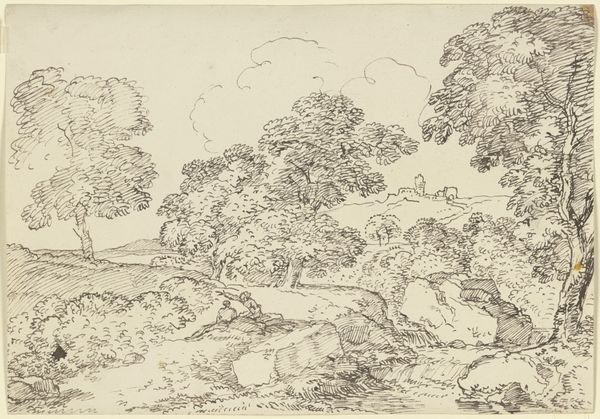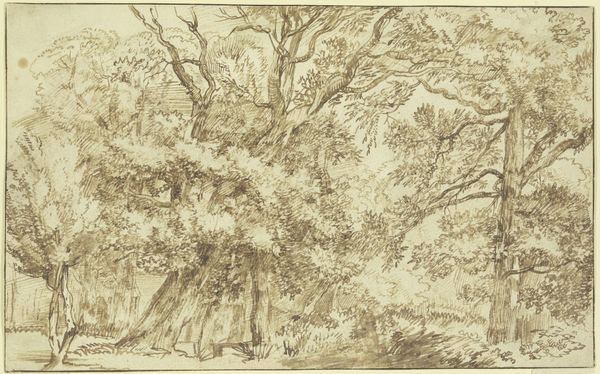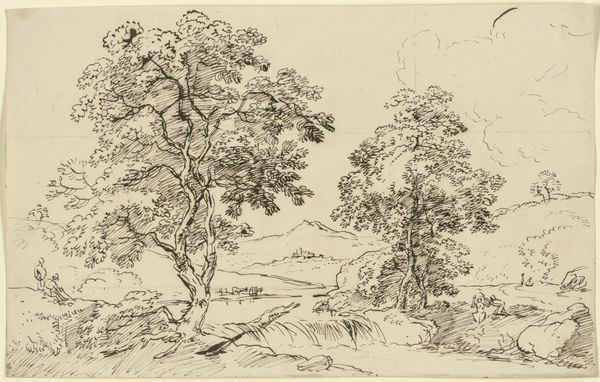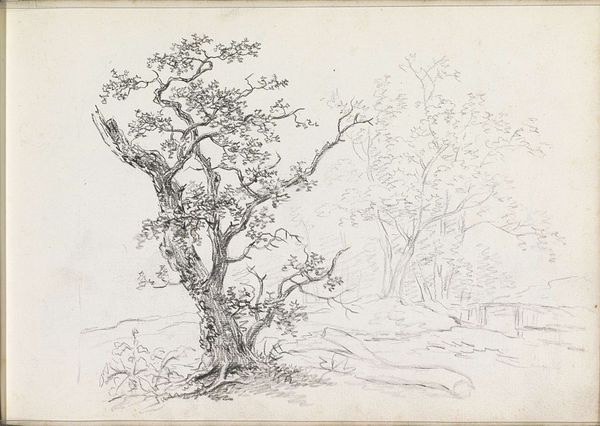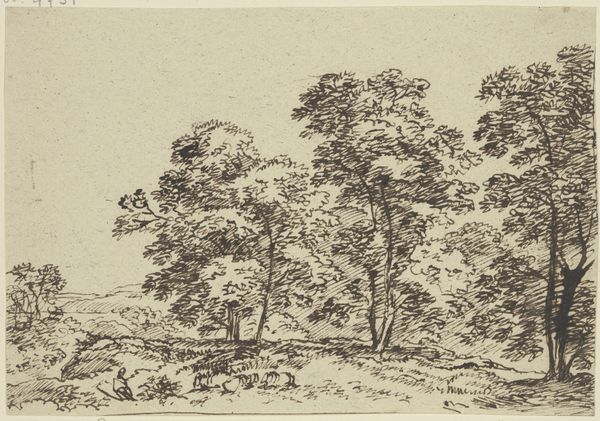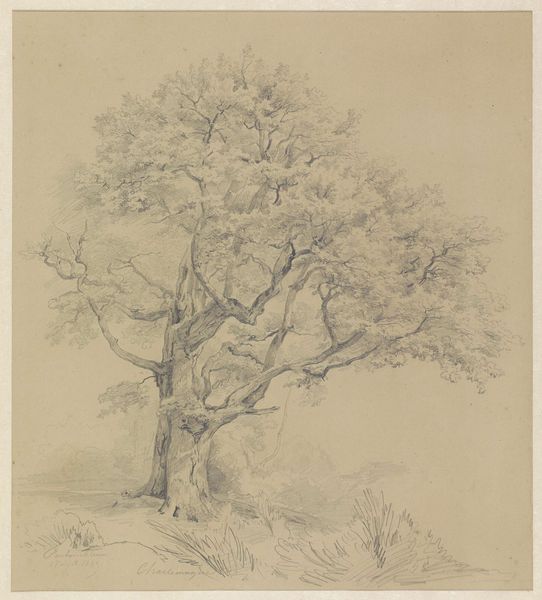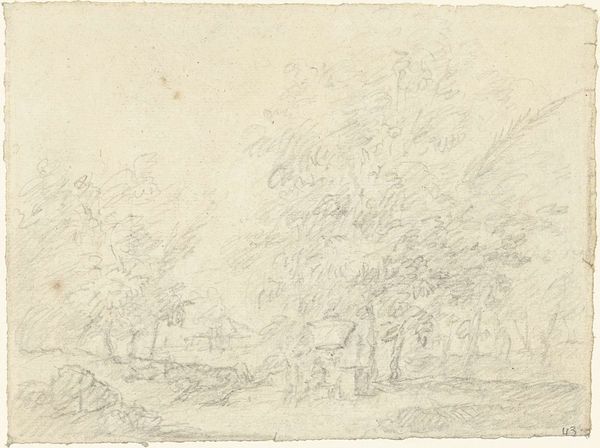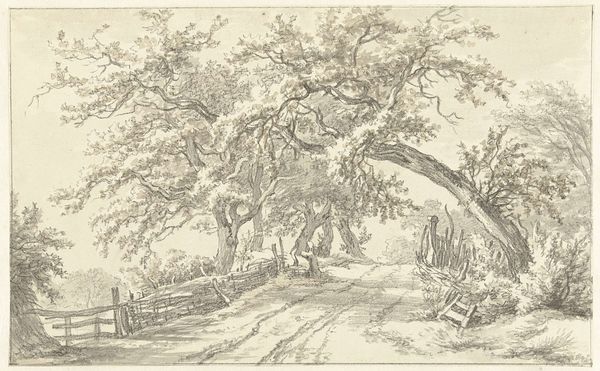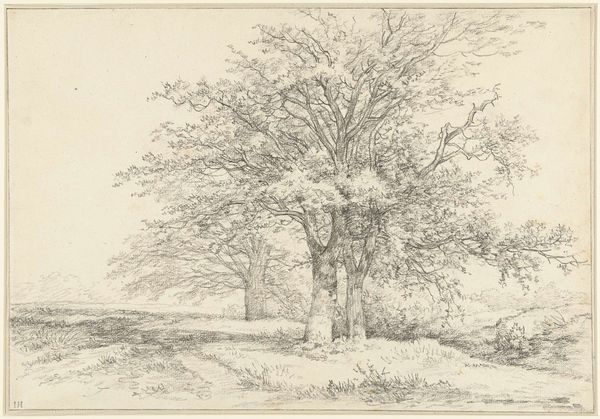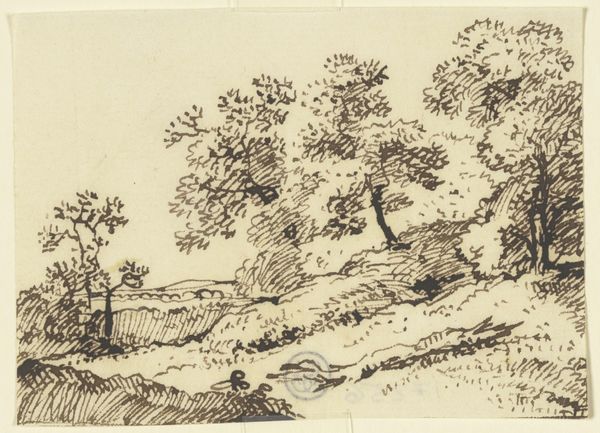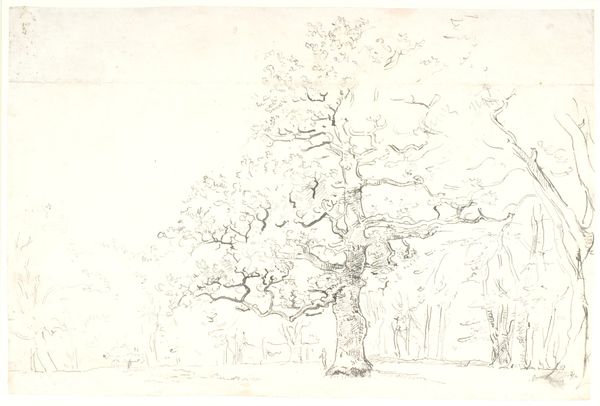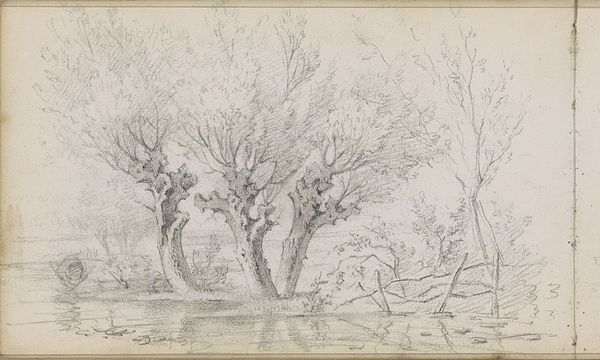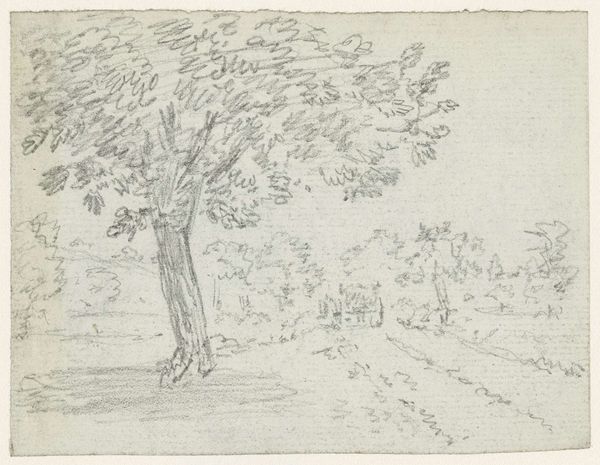
drawing, pencil, graphite
#
drawing
#
pencil sketch
#
landscape
#
romanticism
#
pencil
#
graphite
#
realism
Dimensions: height 90 mm, width 175 mm
Copyright: Rijks Museum: Open Domain
Curator: This is Theodore Rousseau's "Schetsje van een bosrand," dating somewhere between 1822 and 1867. It's a pencil and graphite drawing, a quick study of a wooded landscape. Editor: Immediate impression? A quiet hush. The graphite gives it a lovely, soft, almost melancholic air. It looks like the trees are sharing a secret. Curator: Rousseau was part of the Barbizon school, you know, artists who turned away from grand historical painting to focus on the everyday beauty of the French countryside. He was quite focused on light effect in landscape drawing. Editor: You can definitely see that attention to light. Look how he's layered the graphite to suggest volume and depth within the foliage. Makes me think of how the industrial revolution fueled demand for ready-made pencils; a softer pencil, combined with mass production of paper changed artistic landscape practice forever. The immediacy! Curator: Precisely. And it is worth noting how this isn't just some objective record. There's a distinct romantic sensibility. These aren't just trees, but personalities, brooding presences almost. Editor: I like that reading of "brooding presences," like the trees witnessed generations of labor, logging, peasant revolts. Did Rousseau ever express sentiments against mechanization, in his work? I'd be fascinated to look into it. Curator: There's definitely a reverence for nature here, a feeling of almost wanting to crawl into the drawing and just disappear amidst the leaves. And those strokes almost dance across the paper. He captured a mood, an experience, rather than clinical detail. Editor: Absolutely, but it’s that pencil doing the talking too. Think of the wood itself, and the graphite. One is sharpened; one leaves marks. Their intersection changed art making. Rousseau knew how to make cheap tools yield complex emotion, a vital part of democraticizing art. Curator: You're absolutely right, seeing it in terms of material shifts brings an important layer to how we appreciate not just the Romantic aspects of the image, but the Realist urge, the focus on something actually observed rather than imagined. Editor: It goes back to accessibility, in making tools cheaper, giving artists the flexibility to explore themes otherwise excluded from high-art categories. "Schetsje van een bosrand" brings it all home.
Comments
No comments
Be the first to comment and join the conversation on the ultimate creative platform.
